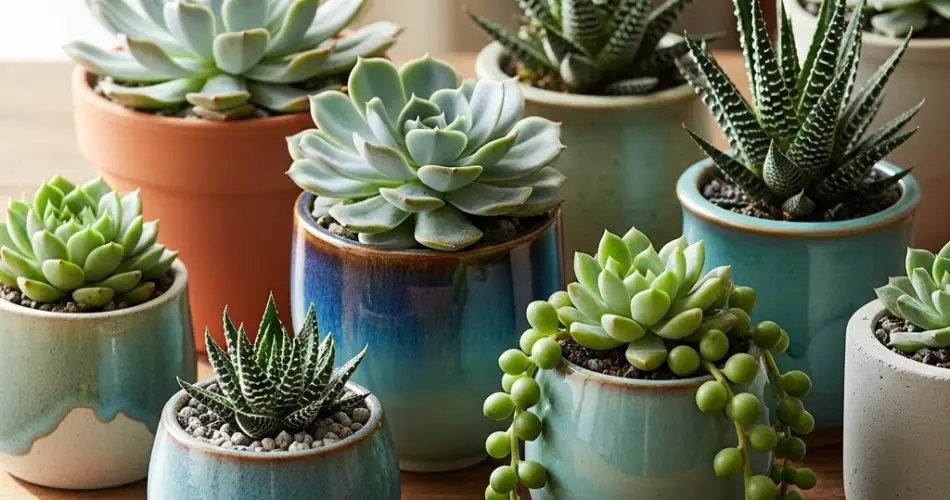Succulents are not only admired for their stunning shapes and vibrant colors but also for their remarkable ability to propagate from a single leaf. This unique characteristic makes them perfect for gardeners of all levels, including beginners and those with limited time. By understanding the process of succulent propagation, you can create new plants from existing ones, expand your collection, and even share greenery with friends and family. This guide provides step-by-step instructions and tips to successfully grow succulents from leaves.
Why Succulent Leaves Can Grow
Succulents store water and nutrients in their thick, fleshy leaves, allowing them to survive in arid conditions. This storage capability also provides energy for the plant to generate roots and new growth. When a healthy leaf is separated from the parent plant, it can develop roots and eventually grow into a fully independent succulent.
Not all leaves are suitable for propagation, however. Choose firm, plump leaves free of damage, discoloration, or disease. These healthy leaves contain the nutrients necessary for successful growth.
Preparing Leaves for Propagation
Before starting the propagation process, it is essential to prepare the leaves properly:
-
Select the leaf: Choose mature leaves near the base of the plant. Avoid leaves that are too small or fragile.
-
Gently remove the leaf: Twist it off carefully at the base to ensure a clean separation. Leaves that tear or break are less likely to root.
-
Allow the leaf to callous: Place the leaf in a dry, shaded area for 1–3 days to allow the cut end to form a callous. This step prevents rot when the leaf is placed in soil.
Proper preparation increases the chances of successful rooting and reduces the risk of fungal or bacterial issues.
Rooting and Growth
Once the leaf has calloused, it is ready for the next phase: rooting.
-
Choose the right soil: Use a well-draining succulent or cactus mix. A combination of potting soil, sand, and perlite is ideal to prevent waterlogging.
-
Lay the leaf on top of the soil: Place the calloused end on the soil surface. Do not bury it, as this can cause the leaf to rot.
-
Provide indirect light: Keep the leaves in a bright area with filtered sunlight. Direct sun can scorch delicate leaves before roots develop.
-
Water sparingly: Mist the soil lightly every few days or when it is completely dry. Overwatering is the most common cause of failed propagation.
Over the following weeks, tiny roots will emerge from the calloused end, followed by new rosettes of leaves. Patience is key, as this process can take several weeks to months depending on the succulent variety and environmental conditions.
Caring for New Plants
Once the new plantlets have developed roots and a small rosette, they require careful nurturing:
-
Gradually increase light exposure: Slowly move them to brighter light to encourage healthy growth without burning the leaves.
-
Water moderately: Begin a regular watering schedule, allowing the soil to dry between waterings.
-
Transplant carefully: When plantlets are strong enough, they can be potted individually in their own containers. Continue to use well-draining soil to prevent root issues.
Proper care at this stage ensures that new succulents develop strong roots and vibrant foliage.
Troubleshooting Common Issues
Propagation can sometimes be challenging, but most problems are preventable:
-
Leaf shriveling: Often caused by underwatering or low humidity. Increase misting slightly and maintain indirect light.
-
Rotting leaves: Usually the result of overwatering or poor drainage. Reduce water frequency and ensure soil is well-draining.
-
Slow growth: Can occur in low-light conditions or if the leaf is not healthy. Adjust lighting and choose leaves with more stored nutrients.
By monitoring the leaves and adjusting care, most propagation challenges can be overcome.
Conclusion
Propagating succulents from leaves is a magical and rewarding process. With just a healthy leaf, proper preparation, and attention to light, soil, and water, you can grow a new succulent from scratch. This technique allows gardeners to expand their collections, experiment with different varieties, and share plants with friends and family.
The process encourages patience and observation, providing a satisfying way to connect with nature and appreciate the resilience of succulents. By following these steps, even beginners can turn simple leaves into thriving new plants, creating a vibrant indoor garden full of life and greenery.



